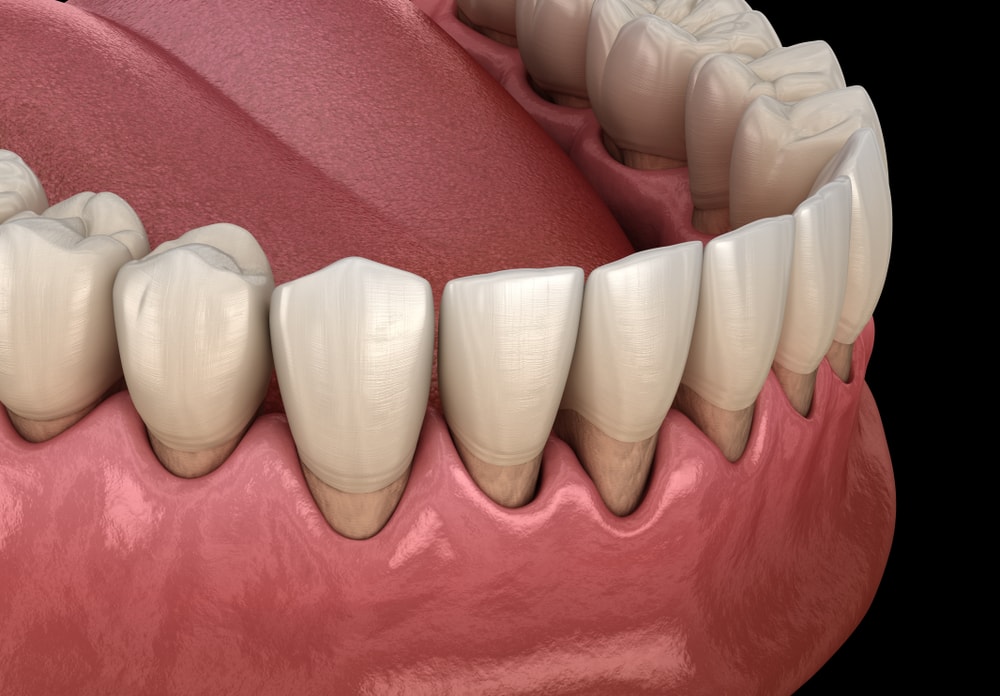Conjunctival graft
Definition
A gingival graft is an autologous gingival graft. This is mucogingival surgery.
Gingival grafting restores thickness and height to weakened gingiva, halting recession.

Gingival recession
The gingiva may present localized or generalized retractions. These lesions are called gingival recessions. These recessions cause the tooth to lengthen, making the dental root more visible, which can lead to sensitivity and aesthetic problems.
The etiology of these recessions is usually inappropriate aggressive brushing, or they may arise following orthodontic treatment. In addition to tooth lengthening, the main consequence is a weakening of the gums supporting the tooth. These recessions can be treated with periodontal plastic surgery or gum grafting, which covers the recession and strengthens the gum to prevent recurrence of the lesion. The graft is taken from the thickness of the palate. Thanks to the evolution of surgical techniques, and in particular the use of minimally invasive surgery, postoperative follow-up is limited.
Aims and indications
- Stopping the progression of gingival recession
- Cover bare roots, which are more vulnerable to decay and dental hypersensitivity
- Reduce dental hypersensitivity linked to this exposure
- Aesthetics: restoring a beautiful smile
- Preventive supply of keratinized gingiva if prosthesis or orthodontic treatment is planned
How does the procedure work?
- The intervention takes place in three main stages:
- Preparing the recipient site
- Graft harvesting
- Its suture at the level of the recession
Gum grafting techniques
- Epithelioconjunctival graft or full-thickness graft :
The graft taken is total: keratinized epithelium + connective tissue. This type of graft increases and strengthens the keratinized gingiva (i.e. its surface is covered with several layers of resistant cells, making it thicker and firmer, particularly on the palate and other areas subject to friction during mastication). It can cover the root to a greater or lesser extent (rarely completely).
- Buried connective tissue graft :
- Laterally displaced flap.
- Coronally displaced flap.
- Apically positioned flap.

